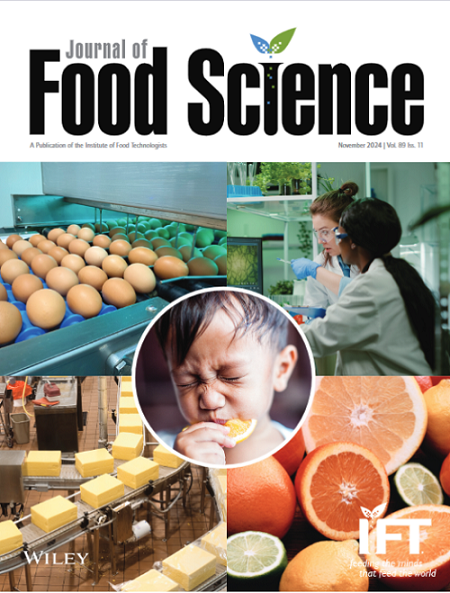Conformational, physiochemical, and functional properties of quinoa protein isolate influenced by thermal treatment
Abstract
This study investigated the effect of various thermal treatments, including atmospheric boiling (AB), high-pressure boiling (HPB), and baking (B), on the conformational, physicochemical, and functional properties of quinoa protein isolate (QPI), as well as its in vitro digestibility. Thermal treatment resulted in QPI denaturation, unfolding, and more exposure of hydrophobic groups, which was reflected as the reduced content of α-helix and increased contents of β-sheet and β-turn. The reduced content of free sulfhydryl (SH) groups and total SH groups in thermally treated QPI also indicated that thermal treatment promoted QPI denaturation and unfolding. The functionalities of QPI, such as solubility, oil-holding capacity, emulsification index, emulsion stability, and gel strength, were improved by thermal treatment, wherein HPB-QPI > AB-QPI > B-QPI > control QPI. Thermal treatment improved in vitro digestibility of QPI and the contents of essential amino acids and hydrophobic amino acids compared to those of control QPI. HPB-QPI showed the highest digestibility in vitro up to 88.26%, and the highest content of essential amino acids and hydrophobic amino acids up to 497.17 mg/g and 344.45 mg/g, respectively. This study provided new insights into the conformational behaviors and functionalities of QPI through thermal processing for benefiting their applications in the food industry.
Practical Application
Through thermal treatment, the functional properties of quinoa protein were significantly enhanced, leading to improvements in plant-based beverages, emulsified foods, and baked goods, thereby expanding its range of applications in the food industry.

 求助内容:
求助内容: 应助结果提醒方式:
应助结果提醒方式:


